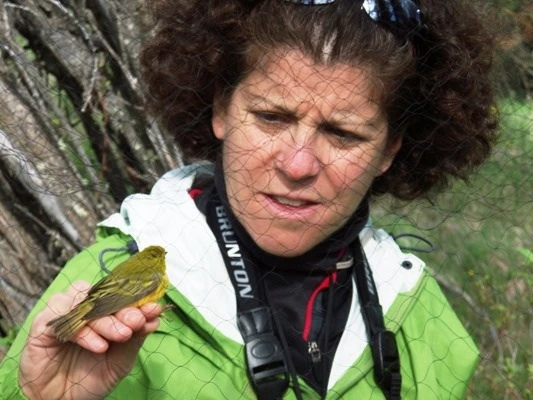It can be extremely frustrating, watching the destruction of our environment and not being able to do a thing about it. Sure, you can give money, write letters and take part in rallies, but... wouldn’t you rather be out there on the front lines, where you could physically help save the threatened habitats, animals and cultures? Well, you can. In fact, you’ve been able to for the past 39 years. Next year, the US-based Earthwatch Institute will celebrate 40 years of giving people the chance to volunteer on environmental research projects all over the world.
Citizen Science
Earthwatch was founded in 1971, for the purposes of getting scientists the funds and volunteers they needed for field work, and for giving us non-scientists the chance to get out there and make an actual hands-on contribution - they call it “citizen science.” Today, the Institute invests US$5.7 million annually to support around 100 projects across 38 countries. It is reportedly the largest environmental volunteer non-profit organization in the world.

Originally the projects were listed in a magazine, but have since moved onto a website. There, potential volunteers can search through descriptions of all the current and upcoming expeditions, and read field reports on past trips. Some of the expeditions require participants to be Scuba-certified, but other than that no special skills or education are required. While they cover everything from counting tree frogs to working with coffee farmers, the projects fall into four main categories:
- Ecosystem services - biodiversity conservation, sustainable agriculture, sustainable forestry, freshwater
- Climate change - adaptation, mitigation
- Oceans - coastal ecosystems, marine biodiversity conservation
- Cultural heritage - sacred landscapes, indigenous knowledge systems

Being out in the field
The length of the trips vary from 5 to 16 days. This year, however, short duration programs have been introduced - some as short as one day. “We want and need more and more people involved in our mission,” Earthwatch’s Kristen Kusek explained to us. “ The window for change is closing fast.” Needless to say, if you just want to lie in the sun and be coddled (and there’s nothing wrong with that), then an Earthwatch expedition might not be what you’re looking for. Accommodations are typically in tents, dormitories, hotels or such, but not in luxury resorts. Volunteers are often expected to help with things like grocery shopping and cleaning, although often some time is set aside for them to go and be tourists. Naturally, some people would be amazed that volunteers pay an average of US$2,700 a trip to stay in modest accommodations and be put to work. Those people should talk to Warren Stortroen.

An Earthwatch addict
At 78 years of age, Warren is one of Earthwatch’s most dedicated volunteers. This year, he took part in his 60th expedition. “‘Dancing Birds’ near Monteverde, Costa Rica was my first Earthwatch expedition in March of 1996,” he told us. “I retired at the end of January and had been researching things to do for a meaningful and interesting life after retirement.” Apparently, he found it. After 14 years and 60 projects, a few stand out. “‘Prehistoric Pueblos of the American Southwest’ has to be an all time favorite, “ he recalled. “Archeology in a remote and beautiful New Mexico canyon with a great staff and Principal Investigators, with many interesting finds and great camaraderie! I did this one five times... I've enjoyed many whale, dolphin, sea otter, and sea turtle expeditions, as well as many that involve wider ecological systems such as ‘Biodiversity of the Grenadines’ or ‘Amazon Riverboat Explorations’.”
The motivation
It’s more than just the riverboats that keep him coming back, however. “I had traveled quite a bit before, but I've found that it is much more satisfying to work with people of other cultures than to simply visit them,” he said. “I like the challenge of discovering new things. I like to feel that I am contributing my share in helping to solve the world's environmental problems.”

If you’d like to take part in an expedition, or if you’re a scientist looking for funding and volunteers, then pay a visit to Earthwatch’s website.










